Secrets to the Best Authentic Italian Meatballs
This post may contain affiliate links. For more information, please see our disclosure policy.
If you personally know a few Italian Americans, you’ll know that everyone of them makes “the best” Italian meatballs. It’s “a thing” among the culture – food is so important and so are family recipes!
Here, I’ll share what you need to know about the most common tips and tricks to make the best, most tender, and flavorful authentic Italian meatballs. I promise.
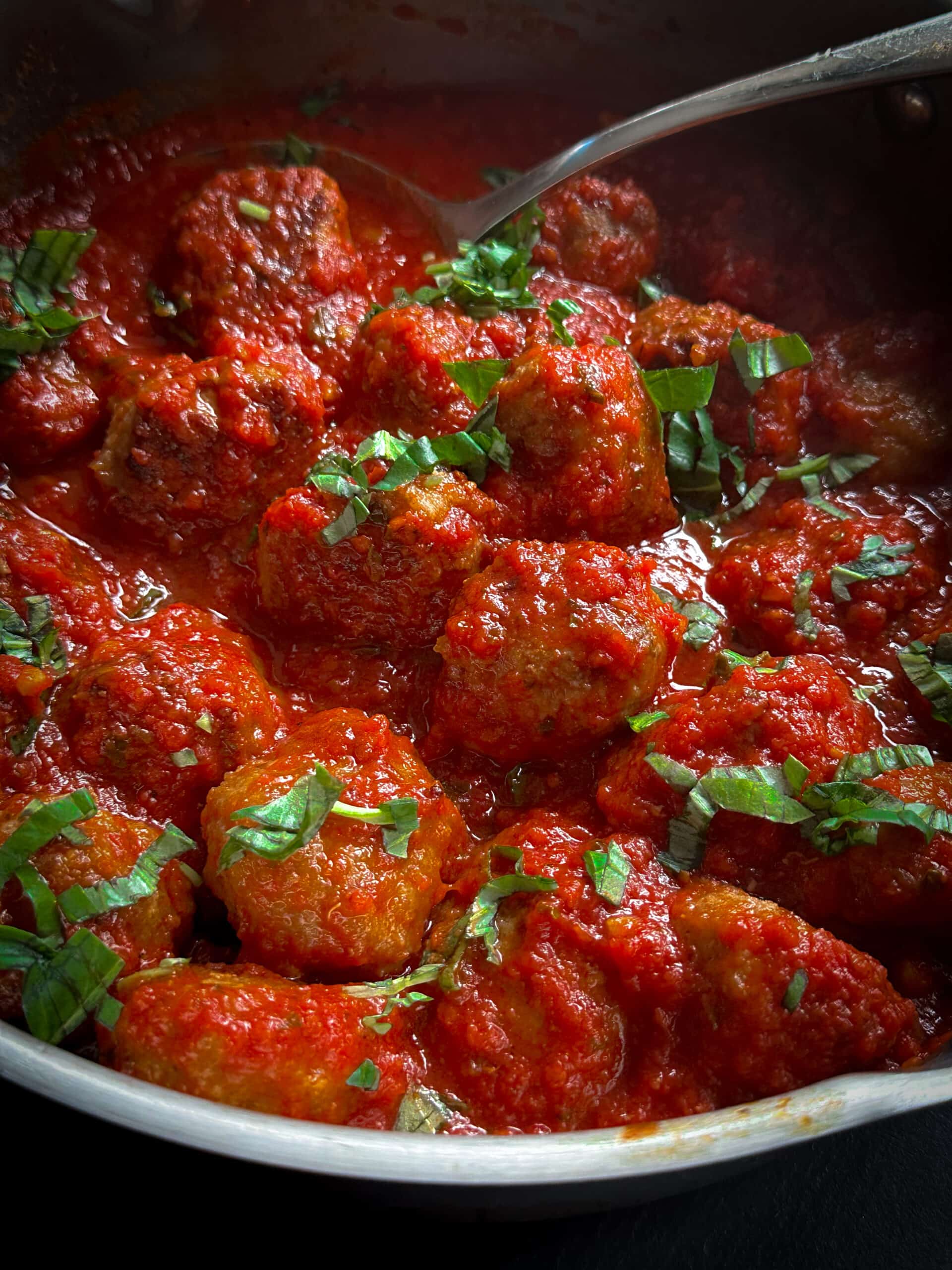
Jump to:
The Backstory
Funny thing about meatballs is that they are one of the foods that I will mostly never eat at a restaurant. Why? Because most times, they are not good.
I think my number one complaint is that there is just either way too much breading in most meatballs or they are no where near tender enough.
Another curious thing is that every family will have their unique little spin on Italian meatballs – they commonly have the same ingredients but they somehow taste a bit different in every home. Seems impossible but it’s quite true.
A funny story: Years and year ago, I worked with a group of older ladies and we held a pot luck luncheon. A dear woman named Florence brought in her “famous” meatballs and I’m not going to lie: I was kinda blown away.
According to her, the secret was using a pack of onion soup mix, and also moistened white sandwich bread (which I’ve come to learn was a “panade”). Please don’t leave….hahaha. I’m not going to make you use soup mix, and if you come from an Italian family, you’ll know that onion soup mix is NOT commonly used (and might get you kicked out of family dinner), but let me tell you her meatballs where so flavorful and tender.
The moral of the story is not using soup mix but IT IS to use softened or moistened bread as well as onion, something my mom never did growing up – but it’s a game changer in my opinion. There are more…
Basic Ingredients
- Ground meat – Always opt for fresh, never frozen and using a combination of beef, veal, and pork is traditional. Some cooks like to use all beef and some leave out the veal. I’ve even used turkey which changes the flavor a little but still good!
- Bread– I like to use soft white sandwich bread (the kind you’d use for peanut butter and jelly); I’ve used bread crumbs in the past but they’re not ideal for making a panade.
- Milk or water – just enough to make a thick paste when mixed with the bread.
- Grated cheese – I like to use parmesan to add flavor and saltiness.
- Egg – 1 egg per pound of meat; this get incorporated into the panade.
- Garlic – 1 clove per pound, but recently I like using powdered instead for ease of use and a more mellow flavor as fresh garlic can be quite pungent.
- Onion – half to one small onion per pound; like garlic, I use dried onion flakes that are reconstituted for both convenience and flavor variation.
- Parsley – I like fresh herbs best but dried works in a pinch.
- Basil – optional; fresh or frozen, but never dried basil. Skip it if you can’t get fresh or frozen. I like to use basil in my sauce.
- Salt – 1/2 teaspoon per pound of meat; remember that grated cheese also lends a salty flavor. Test a small fried or otherwise cooked meatball before cooking the whole batch to test for salt.
- Pepper – black pepper, 1/4 teaspoon for pound of meat, sometimes I like to add a few shakes of crushed red pepper too.
- Olive oil – just a tablespoon for added flavor; optional really; you’ll also need extra oil for frying if you don’t want to oven fry.
- Tomato sauce – for cooking and also serving.
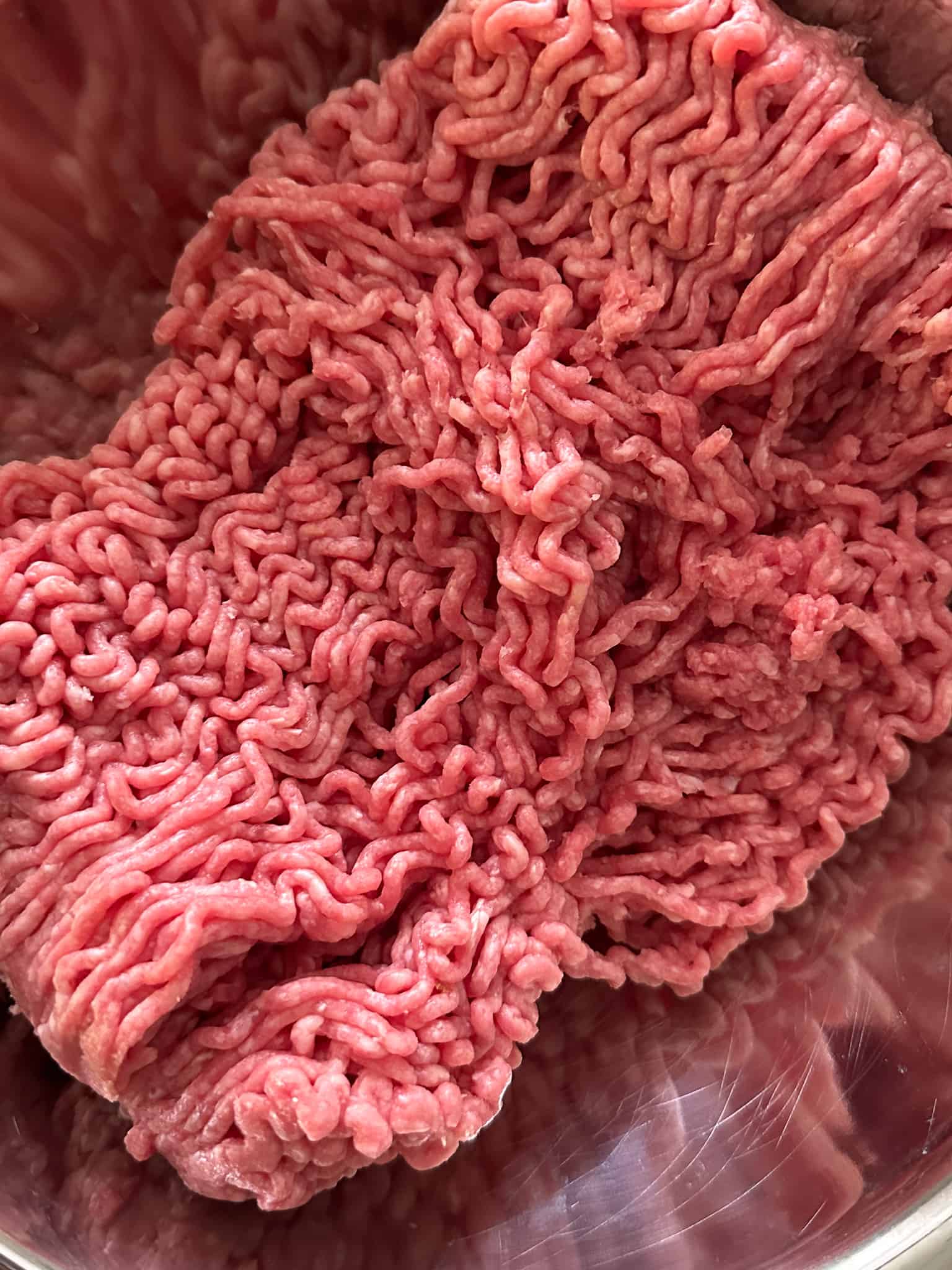
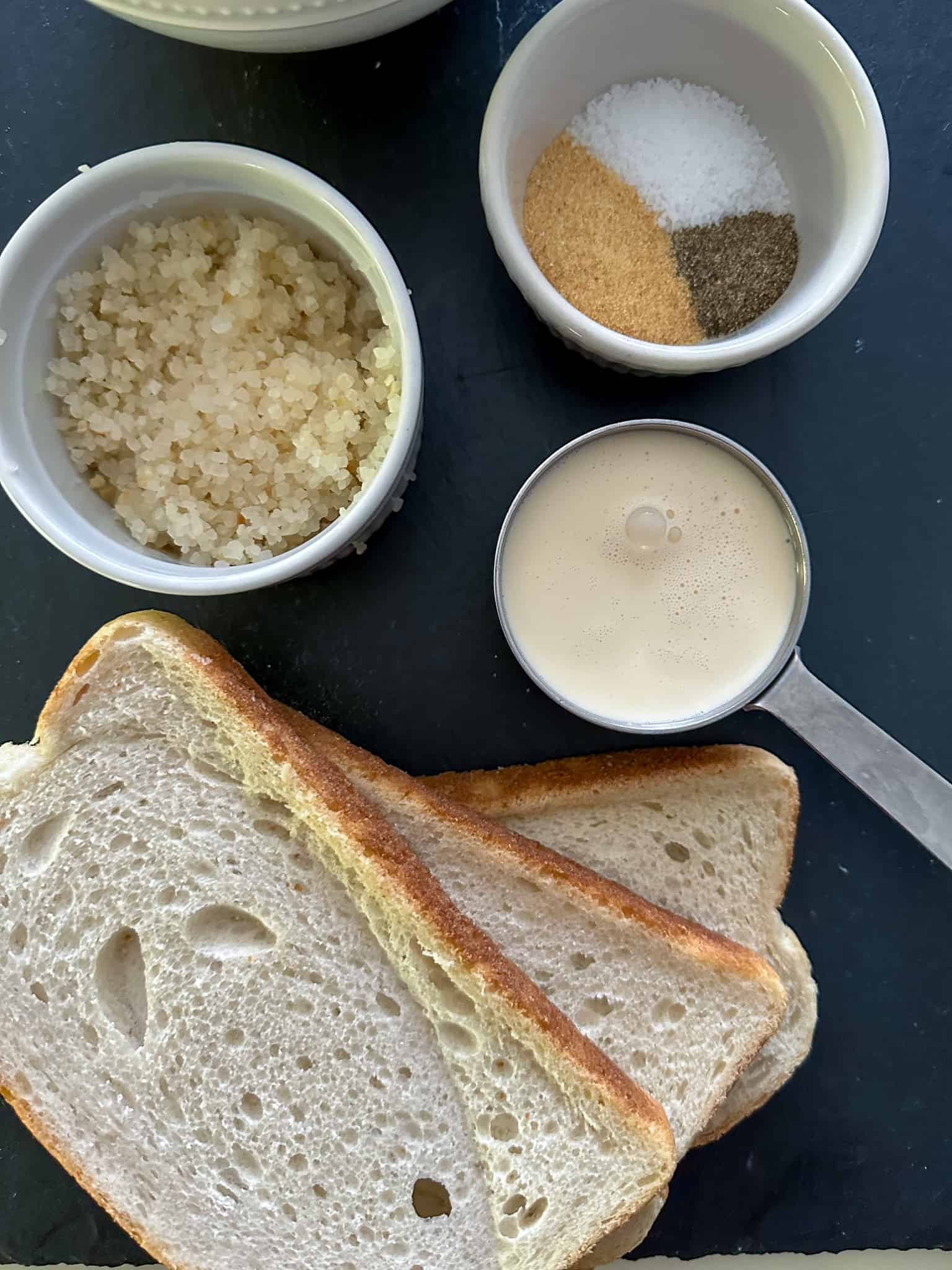
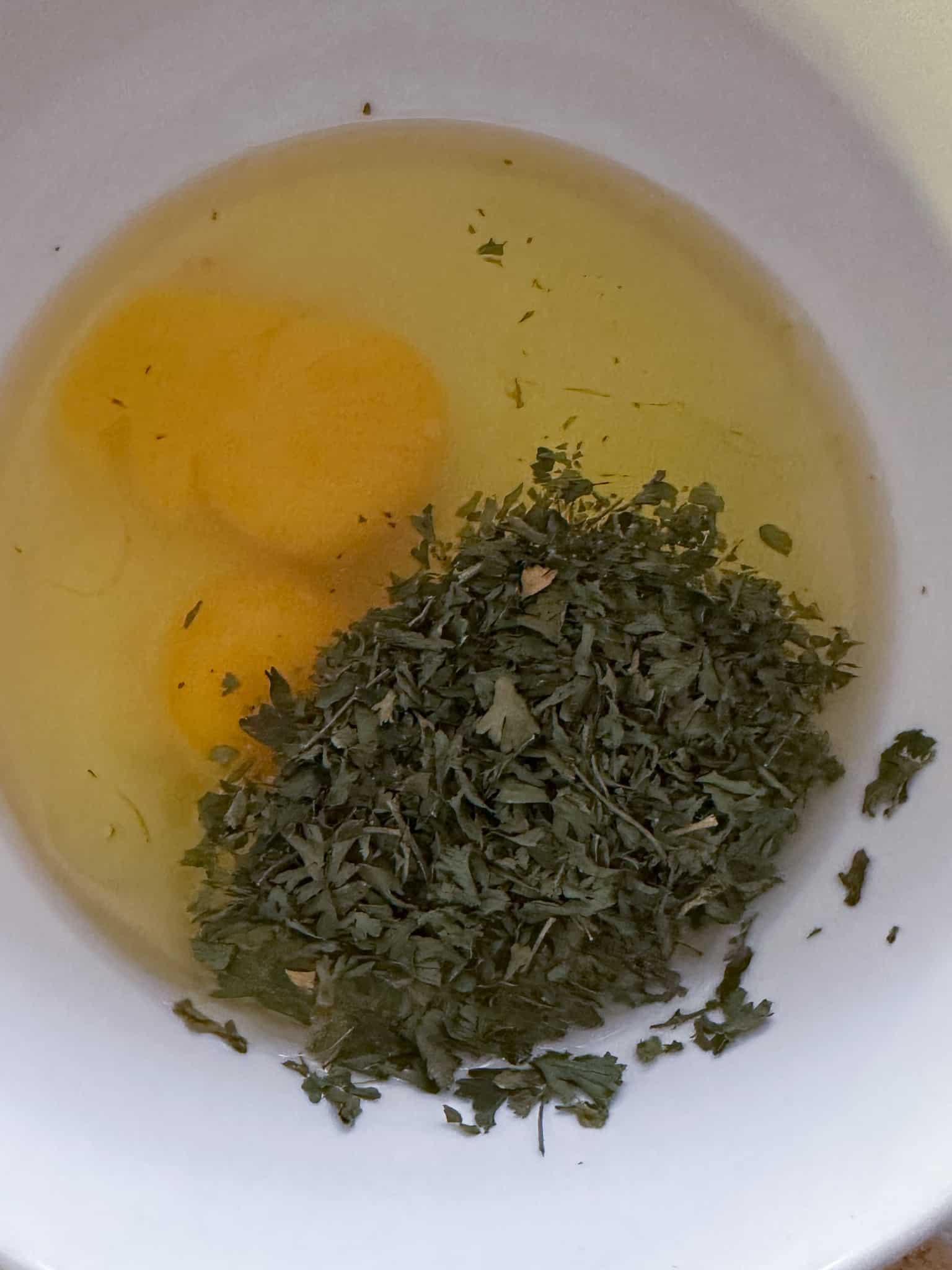
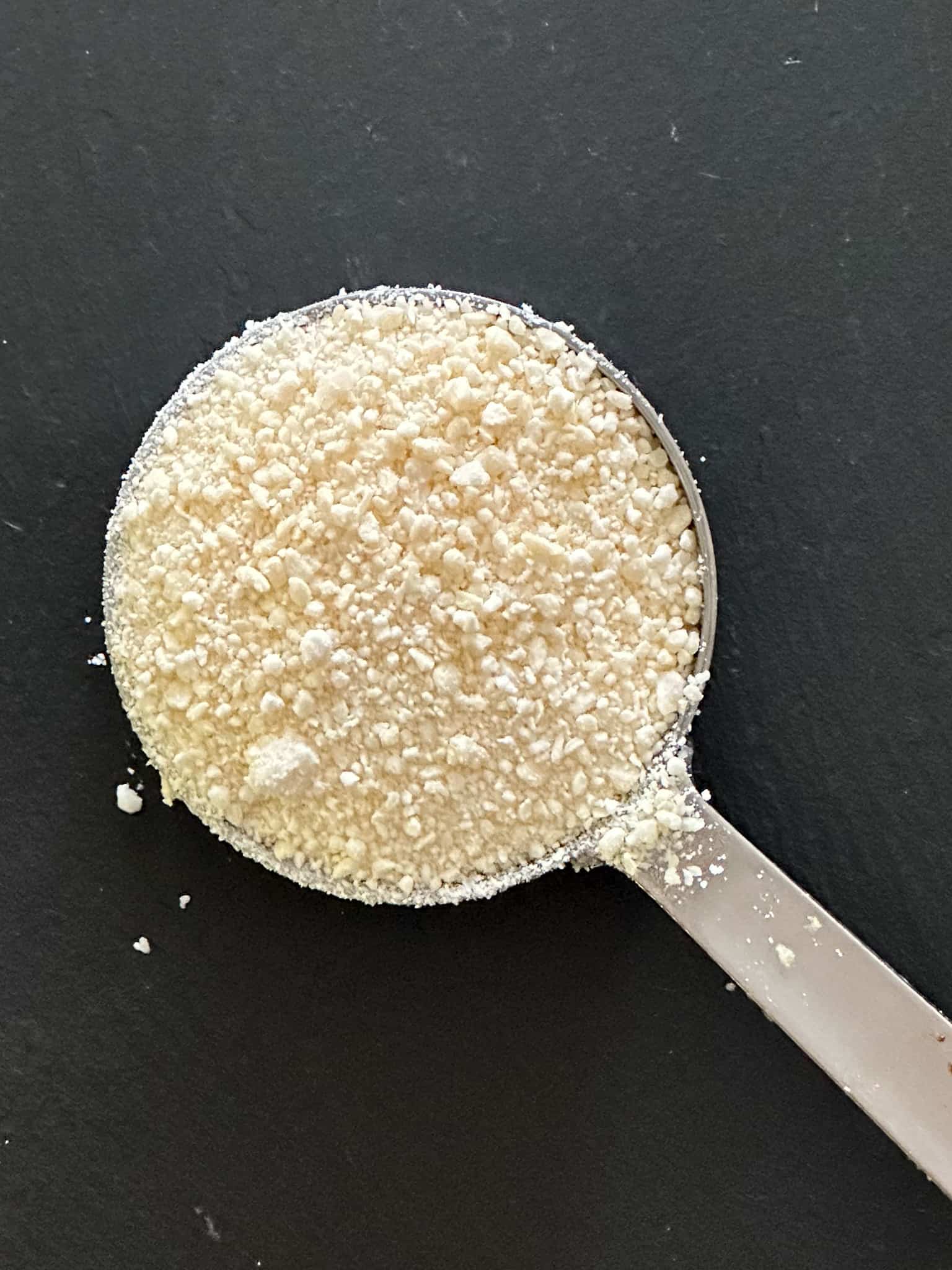
Most Common Cooking Methods
The traditional method for cooking Italian meatballs is to fry them in oil and then finish cooking them in tomato sauce. There are several other options including baking in the oven (I am broiling in top third of oven for 7 to 10 minutes; time depends on size of meatballs) and finishing them in pasta sauce (simmering sauce for about 10 minutes), or poaching them in pasta sauce (I personally have never tried this but people swear by it; it involves simply dropping uncooked meatballs in sauce in cooking until finished).
I feel like it’s much easier and less messy to broil them in the oven and finish them in pasta sauce. I will probably never go back to frying again but you do you as they say.

General Methods for Making Tender Meatballs
Want to know a secret? My father used to jokingly say that my mom’s meatballs could break a window. Oh boy! I always thought my mom was a better baker than cook and to be honest, in the old days in Italy, meats, cheeses and the like were more luxuries than every day meals so she was always much better at things like making greens or baking bread.
Eventually she discovered that slow cooking the meatballs gave them the soft and tender texture much like we do with braciole, a tough cut of meat that is tenderized over time with slow cooking.
But you know what? Using a panade is a MUCH better idea and the texture in my humble opinion is SOOO much better!
For completeness, let’s review the techniques that many Italian Americans use to make their meatballs tender and tasty:
- First, and this is the method that I use, incorporate a panade with white bread or leftover bread. I like to use a ratio for increasing the tenderness of meatballs of 2 parts meat to 1 part bread/water(or milk).
- Another method is not to use meat that is too lean – fat increases tenderness. I have used lean meats and the results are okay but using a fattier meat is pretty key; opt for 15 to 20% fat in your meat.
- I don’t use this one any longer, but a long, low and slow cook with give you very tender meatballs. Cooking in the crockpot for a few hours will work wonders. However, the texture of the meatballs does change and I don’t use this method with the panade method as they would probably be TOO tender. That said, it might be a great option if you want to use lean meat .
- Some people swear by using a bit of ricotta cheese and love the tenderness and taste – this makes sense as ricotta cheese is essentially adding fat to the meatballs (see first point above).
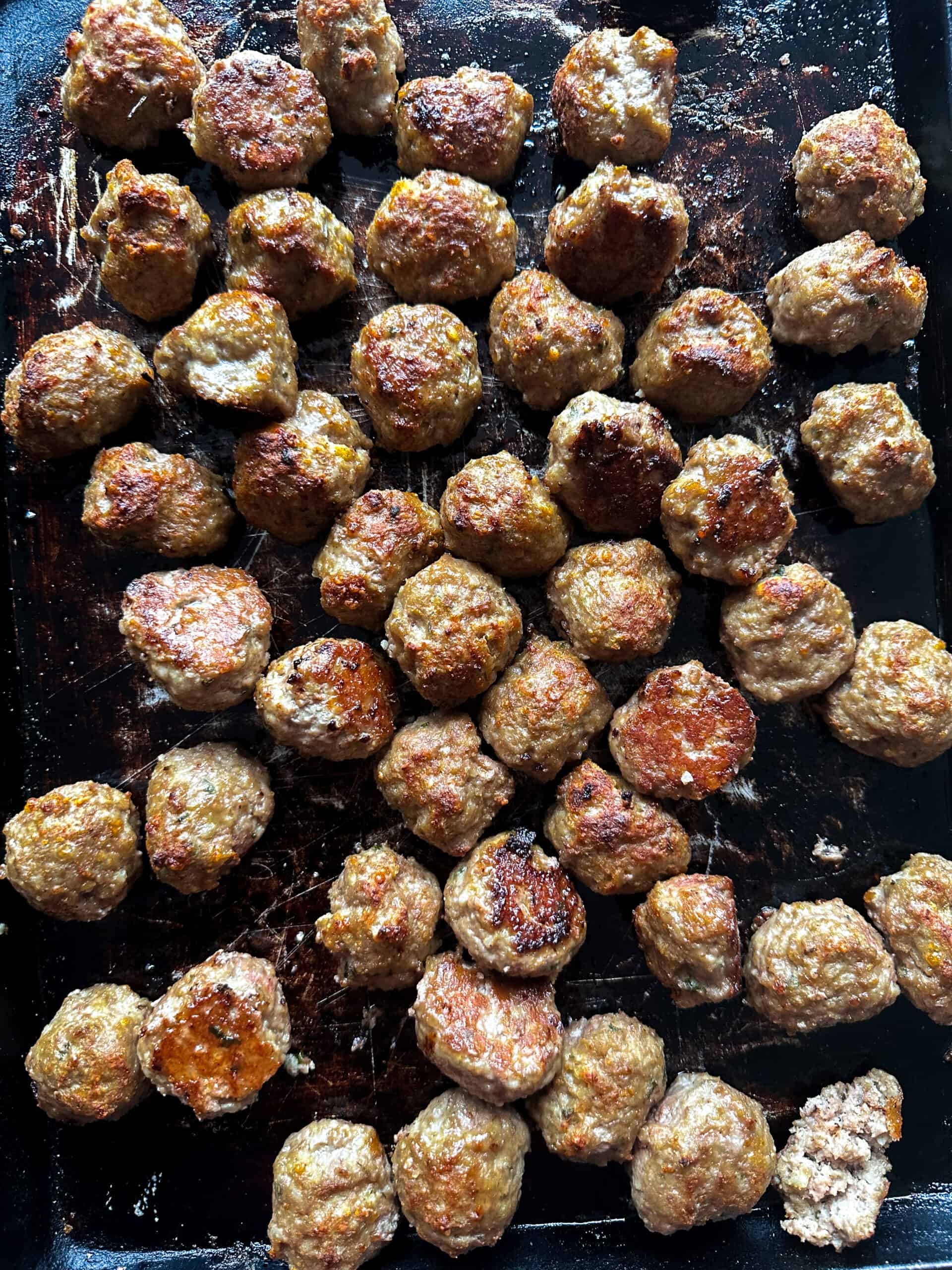
My Personal Top Tips
- Use fresh NOT frozen meat. Freezing the meat tends to compact it and it doesn’t taste the same. Think frozen hamburger vs fresh…same with meatballs!
- Use the correct ratios of ingredients; for example, per pound of meat, I use 1 egg,
2 slices of white bread, 1/4 cup of grated cheese as well as other herbs and aromatics. - Do NOT overwork the meat. Pressing and mixing the meat mixture too much will condense the meat and result in tough meatballs. Use a light tough when mixing!
- Use a panade – this recipe uses a panade (in this recipe, a combination of moistened bread with other ingredients that has a pudding like texture). The panade will coat the ground meat and keep it moist and tender.
- Flavor: If time allows, let the flavors marry by making the meat mixture ahead of time (either by a few hours or the night before) – be sure to cover and refrigerate the meat.
- Fry a small meatball first and taste it to check for seasoning. Adjust if you want more salt, garlic, etc.
- Always make extra! Meatballs make a perfect make ahead freezer meal for those nights when you don’t feel like cooking. If you’re already making meatballs, double or triple the recipe and freeze some for those nights that you want an easy meal.
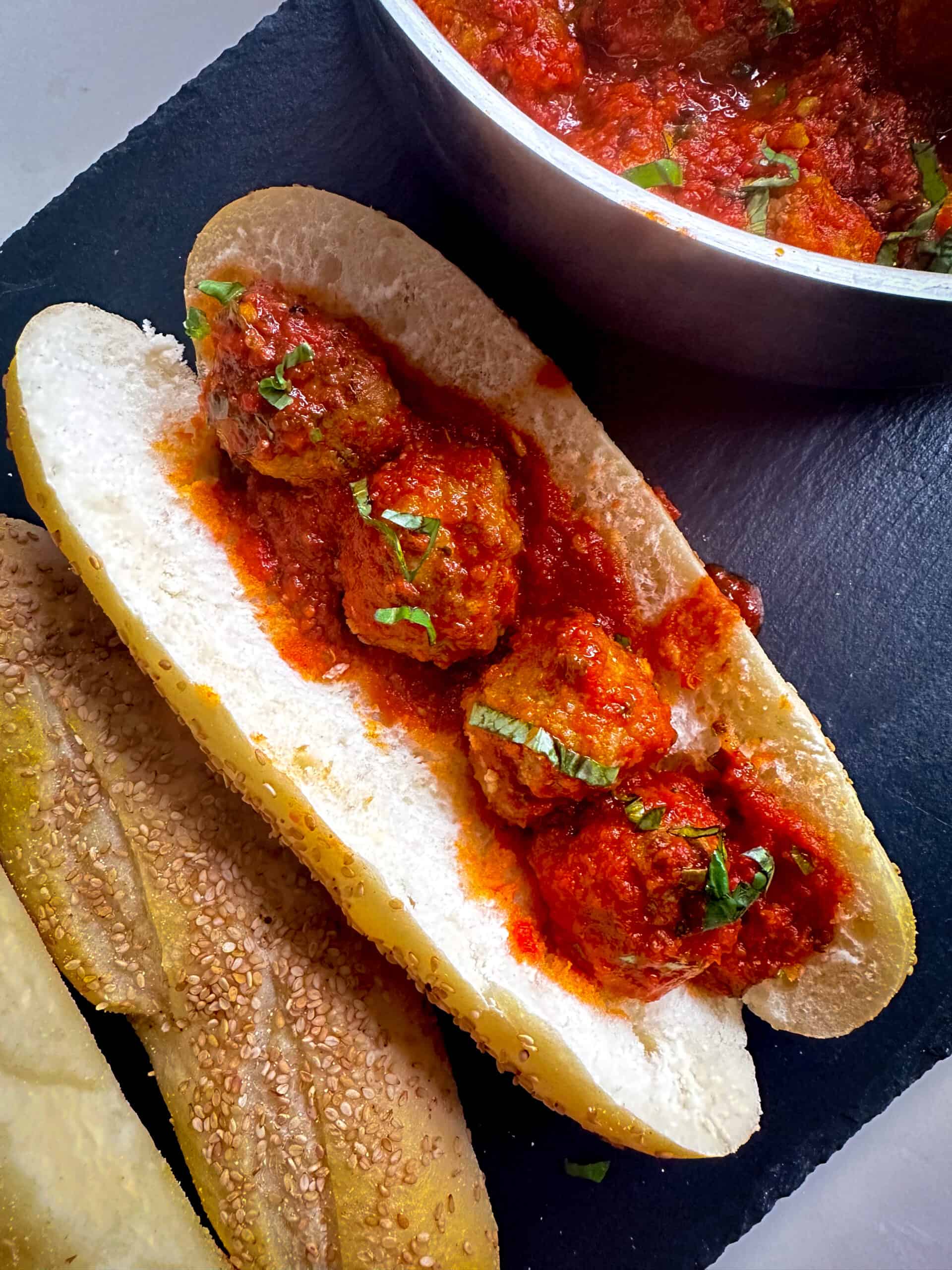
How to Enjoy Meatballs
- As a side dish with pasta
- In a sandwich roll as a grinder, sub, or hoagie
- Make mini meatballs and serve in Italian wedding soup
- Smash them before cooking and serve with burger buns.
- In a casserole dish topped with melted mozzarella cheese as meatballs parmesan.
These are great with pasta or as part of a hoagie or sub sandwich. One of my favorite ways to serve them would be on a long Italian roll with spaghetti sauce and melted provolone.
Storage and Make Ahead
Leftover meatballs can be stored for 3 to 4 days in the refrigerator or up to 2 to 3 months in the freezer according to the FDA.
📖 Recipe
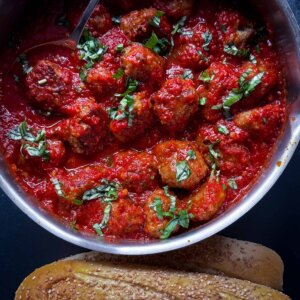
The Best Italian Meatball Recipe
Video
Ingredients
The Ground Meat
- 1 pound ground meat traditionally a combination of ground beef, veal, and pork; may use all beef or beef and pork (can substitute any ground meat you'd like) (fresh is best, try not to use frozen)
To Make the Panade
- 1/2 teaspoon garlic powder or 1 clove per pound of meat
- 2 tbsp dried onion flakes (rehydrated with boiling water and drained) (can use double if you love onion flavor – I do!) can use 1/2 small onion, per pound of meat; (finely chopped and sautéed) (or double if you like onion flavor)
- 1 handful fresh basil, finely chopped can use frozen instead (dried doesn't taste at all like fresh)
- 1 handful fresh parsley, finely chopped can use dried instead (1 tablespoon per pound)
- 1 egg
- 1 tablespoon olive oil
- 2 slices white bread
- 1/4 cup Parmesan cheese , grated
- 2 tablespoons milk (or water in a pinch) (see NOTE) NOTE: up to 1/2 cup depending on how dry and dense your bread is; you will need enough to make a thick paste or to soften all of the bread; older bread will need more liquid.
- 1/2 teaspoon salt
- 1/4 teaspoon pepper
To Cook the Meatballs
- oil for frying optional (to use if frying)
- marinara sauce for cooking and/or serving
Instructions
- Place ground meat in a large bowl and set aside
- Make the panade: Add the bread to a large bowl and add enough milk (or water) to make moisten all of the bread into a very thick paste mixture.
- Add remaining ingredients for the panade and combine well.
- Lightly combine the panade with the ground meat. (try not to compress mixture too much when mixing)
- If time allows, let the mixture sit in an airtight container in the refrigerator for at least 1 hour or overnight if possible to enable flavors to marry
- Just before cooking, form the meat mixture into golf ball sized meatballs and set onto a lined cookie sheet.
To Fry:
- Heat about 1 inch of oil in non-stick skillet over medium high heat and then lightly brown the meatballs in batches (they can also be baked at 350 degrees for about 20 minutes depending on size)
- Place browned meatballs in a pot of spaghetti sauce and cook over very low heat for about 30 to 45 minutes.
To Oven Fry:
- Bake meatballs for about 15 minutes at 450 F.
- Warm in simmering spaghetti sauce to heat through and continue cooking for about 30 minutes.

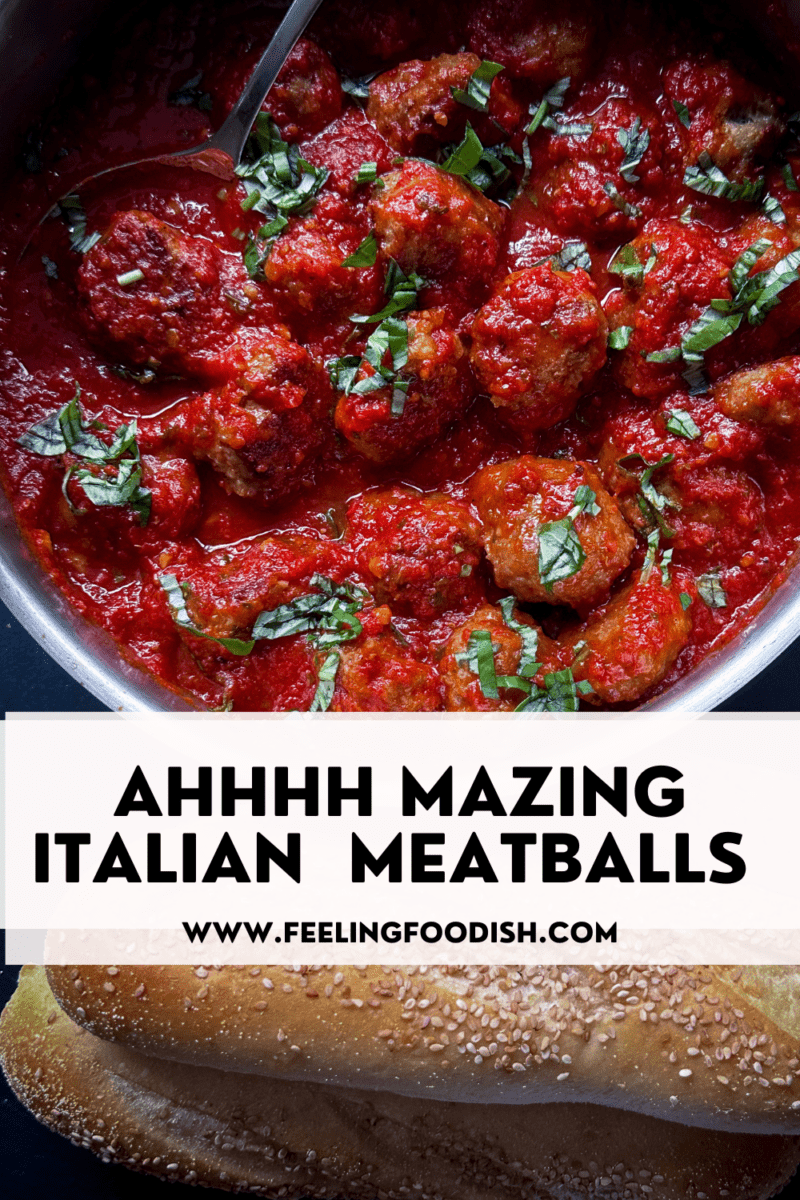
I’m not Italian, but 3 branches of my extended family were. One uncle born in Italy, 2 uncles 1st generation Americans with parents born in Italy who’d immigrated well before WWII, and my brother-in-law is first generation here, and had cooked for his banqueting business for many years until selling it, too. Most of this area has a strong Genovese “flavor” about it. The Italian restaurants here used to be AMAZING when I was a kid, but are really horrible now, sadly. Hardly even a step up from the awful national chain Italian restaurant. Having grown up on really fabulous & delicious Italian food, there had been no choice but to start cooking it at home decades ago, and there are some very good Italian markets and bakeries still remaining here, fortunately! One curious thing, though, is that most Italians here did not include onions in their meatballs, and had relied mainly on imported cheeses (pecorino or Parmesan Reggiano) and basil or oregano and parsley, instead. Like you, I use white bread (usually Pepperidge farm original white bread) in meatballs too, but if I have an Italian “star” bread handy, will use that for a more authentic old-fashioned taste. I’m not sure it’s called “star” bread in regions outside of the northeast, and it’s actually shaped more like an “H” than a star, but it’s a light, dense, & very dry Italian bread that Italians here had mainly used for their meatballs. But the bakeries also make an Italian St. Joseph bread and an Italian Boston bread that work ok too. Like you, also, I used to fry them sometimes but mostly bake them now for convenience, and freeze large batches so we can have them fairly often. I’ve also cooked them raw in marinara sauce on the stove or in a slow cooker on occasion, if the meatballs are just firm enough not to fall apart at a very low simmer. I do like them cooked directly in sauce too, because they have a moist melt-in-your-mouth texture that way, but I actually like them baked and then simmered in sauce too. I’ve done them on a rack in an 8qt Instant Pot, piled in a pyramid shape with beef broth under the rack, and that way comes out very similar to the texture of meatballs cooked directly in sauce. Really??? I don’t much care which way they’ve been cooked as long as I have a continuous supply of them available, I can be happy!!!! So I’m always open to new recipes and will be trying your recipes for meatballs and sauce soon, too!
I’ve heard dropping them directly in the sauce makes them super tender, but I have yet to try that! Soon hopefully. And my mom never used onion either – I feel like Italian cooking varies so much according to the region in italy but I don’t think my mom’s region was big on red meat (at least when my mom was there) as she was from a coastal town where the food centered mostly around vegetables, pasta and seafood. Your meatballs sound delicious and I hope you like this version too! Thanks so much for your comments!
I so agree with this comment! I’m 75 and grew up in New England. Back then there were many immigrants from various countries who had restaurants, and you could always count on really delicious authentic food, which was a real treat for a foodie growing up in an old Yankee meat and potatoes family. Now you can’t get a real bagel even in NYC! Looking forward to making these meatballs today after finding a premixed blend of beef pork and veal at Hannaford’s.
Hi Marie, love to see how other ppl make their meatballs. I married a Sicilian/Neapolitan man whose mother would not share any recipes. I learned on my own! I like mine all beef, I’m against eating veal, a cup or two of Romano cheese, fresh for half if I can. Parsley, sometimes grated onion, a couple tbsp of my sauce, one egg per lb of meat, salt and pepper. I then bake at 400 till brown and right into simmering sauce for at least three hours. I try to stir as little as possible. There’s two places in Buffalo NY that have ok meatballs. One makes it the size of your hand, which I think is obscene…but, ok.
I’ve been reading about adding sauce to meatballs – I bet that’s good! My mom would slow cook them too. Very tender!
Great
Hi Marie. I just made the rum cake the other day. Loving your other recipes. Gonns make the Sicilian strawberry/ ricotta cake yhis week.
Anyways. I also NEVER order meatballs at restaurants because, as you said, they are always terrible.
Funny story. Was out to Dennys after drinks one night and decided to het their spaghetti and meatballs just for tje fun of it. I’m not even kidding you bit their meatballs were delicious! Lol. Seriously. Anyways, worth trying just for tje irony.
Haha – that is funny! Good to know:)
Hi: I’ve found that veal makes the most tender meatballs. I also like adding mozzarella cheese & Asiago cheese plus eggs, cream as you did. I brown them in olive oil and butter. The cheese that is on the outside of the meatball carmelizes which really makes it. Then afterwards I put them in the sauce to braise.
I’ve never used all veal – interesting. I’ll try it someday – thanks for the tips!
This looks delicious! I love it that you processed some of these ingredients rather than the time consuming hand chopping. I have an Italian meatball recipe that is similar and I cook up a huge batch and keep them in the freezer for quick and easy put-together meals. Thanks for the recipe! 🙂